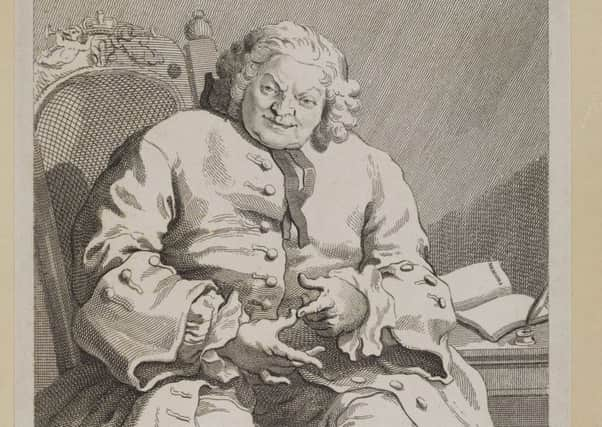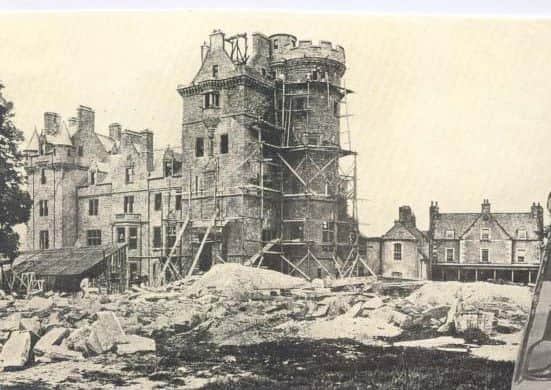Simon Fraser - the last man in Britain to be beheaded


Living a colourful life, Simon Fraser was born in 1667, his main concern being succeeding the title of Lord Lovat from Hugh Fraser, Clan chief of the Fraser’s.
Simon seemed about the way Hugh was leading the clan, seeming weak against the growing Mackenzie clan.
Advertisement
Hide AdAdvertisement
Hide AdWhen Hugh Fraser passed away, Simon decided the best way to secure the Lordship would be to marry his heir - Hugh’s daughter Amelia. But Amelia’s uncle had other plans - he married his niece off to Alexander Mackenzie, heir to Lord Saltoun. In response, Simon Fraser forced her mother - also named Amelia - into marriage, and consummated the ceremony by raping her.


A price now on his head, Simon fled to France, where he travelled in Jacobite circles. Being granted an audience with King Louis IX, Simon declared his support for the Jacobite cause and restoring a Stuart King to the Scottish throne, agreed to help in the 1715 uprising.
However, his main goal was still to claim the Lordship, and instead acted as a double agent, informing James, 2nd Duke of Queensberry and the Queen’s Scottish representative, of the impending uprise.
The news of Simon being back in Britain started to spread, and he escaped back to France, to wait and see if he would be pardoned for his crimes.


But when the French court found out about his double-cross, Simon was sentenced to life in exile.
Back in Scotland, very few of the Fraser Lairds had accepted Alexander Mackenzie as their chief, so several men were sent to France to retrieve Simon.
Unfortunately for him, Alexander was caught up on the losing side of the 1715 Jacobite uprisings, and condemned to prison. Simon was granted a full pardon for his help and the title of Lord Lovat was restored to him in 1716.
Advertisement
Hide AdAdvertisement
Hide AdHis previous marriage was all but forgotten and Simon Fraser, Lord Lovat married Margaret Grant, producing five children, two of whom were boys, securing his family’s hold on the Lordship.
Through out all this, and despite his betrayal, Simon always claimed Jacobite sympathies.
When the 1745 rising came around, Simon was unsure which side to join, even after his 19-year-old son gathered a group of clansmen to join the Bonnie Prince.
The government grew impatient with Simon’s lack of declaration for either side and demanded his presence in Inverness, where he was swiftly confined to his townhouse.
Escaping through a secret passage, Lord Lovat officially declared his support for the Jacobite cause and his clansmen went to fight in the battle.
Fighting on the front line, the Fraser clan was slaughtered on Culloden Moor. Lord Lovat escaped to the Highlands, just one day after the Bonnie Prince, after his home - Castle Dounie - was pillaged and burnt to the ground by the Redcoats.
Simon was eventually caught by the Redcoats on Loch Morar, while trying to arrange transportation back to France, and was brought to London for trial.
Advertisement
Hide AdAdvertisement
Hide AdSuffering from gout and arthritis, in his advanced age of 70, Simon stood trial for six days, with a guilty verdict being announced. Originally, the Lord Lovat was sentenced to be hung, drawn and quartered - the typical punishment for treason.
But the King took mercy on Simon, and allowed him to simply be beheaded instead.
On April 9, 1747, many spectators arrived at Tower Hill to watch his execution - so many, in fact, that a wooden stand holding spectators collapsed and killed nine people - much to the Lovat’s amusement. He was said to keep his good sense of humour until the end.
It is said that among his last words were a line of Horace: “Dulce et decorum est pro patria mori”, which means “It is sweet and seemly to die for one’s country”. And when the blade fell, Simon Fraser, Lord Lovat became the last man in Britain to be executed from beheading.
